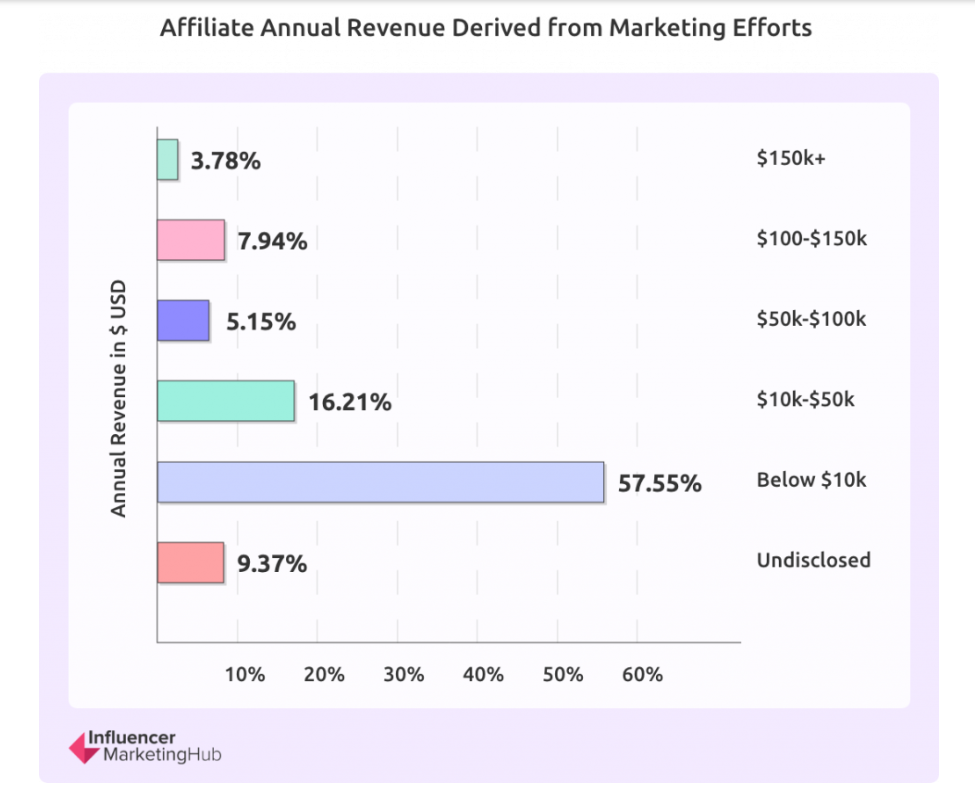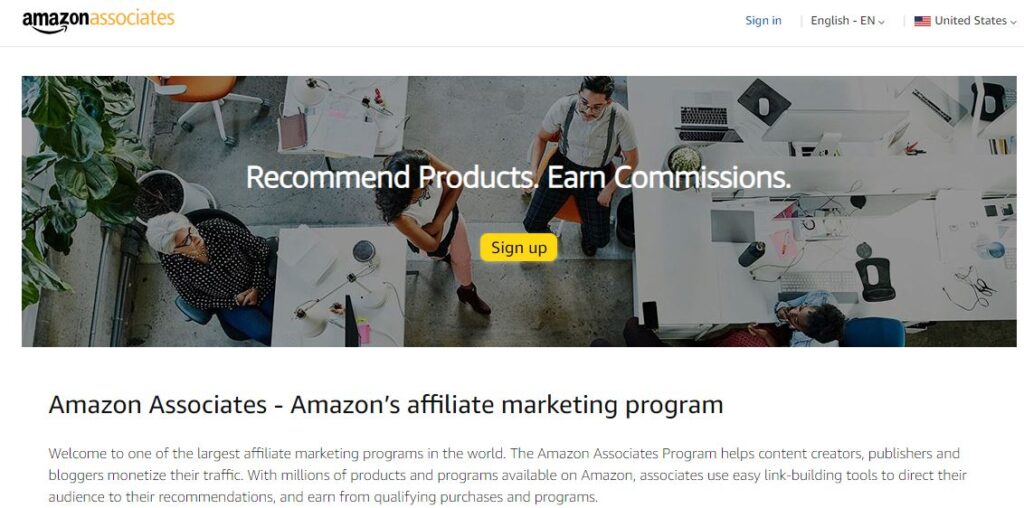Address
304 North Cardinal
St. Dorchester Center, MA 02124
Work Hours
Monday to Friday: 7AM - 7PM
Weekend: 10AM - 5PM
Address
304 North Cardinal
St. Dorchester Center, MA 02124
Work Hours
Monday to Friday: 7AM - 7PM
Weekend: 10AM - 5PM

Are you trying to get a new stream of income but do not know how to? Don’t worry anymore; I will share with you the beginner’s best practices for affiliate marketing.
According to Wikipedia
William J. Tobin, the founder of PC Flowers & Gifts.
The concept of revenue sharing—paying commission for referred business—predates affiliate marketing and the Internet. The translation of the revenue share principles to mainstream e-commerce happened in November 1994, almost four years after the origination of the World Wide Web.[citation needed]
The concept of affiliate marketing on the Internet was conceived of, put into practice and patented by William J. Tobin, the founder of PC Flowers & Gifts. Launched on the Prodigy Network in 1989, PC Flowers & Gifts remained on the service until 1996. you can read more here
Consider affiliate marketing as a recruitment agent responsible for promoting your products or services, applicable to both business owners and large corporations alike. Regardless of your business size or structure, there is a common essential requirement: generating sales.
Answering the question: Affiliate marketing is the procedure in which an individual associates with a company, promoting its products or services through its website to generate revenue through a unique URL for that offer.
Here’s a comprehensive analysis report with intriguing stats for you.
Affiliate marketing has witnessed an upswing in investment, with over $1.5 billion raised in all-time funding across 232 rounds in 2023[3]. The industry, now valued at more than $17 billion, has experienced significant growth from $13 billion in 2016[4]. Predicted to be worth $12 billion globally, affiliate marketing continues to be a lucrative avenue[6].
Learn more: Incredibly Simple Program Built For Anyone, from Beginner To Expert Teaching Incredibly Unique Strategies

When you join an affiliate program, you’re provided with a unique link that includes a tracking ID. This link serves the purpose of tracking customers you refer to the merchant. Here’s a breakdown of this process:
In addition to this, the system involves the use of cookies:
The key to this system’s functionality lies in the use of cookies, allowing you to earn a commission not only on the recommended jacket but also on any additional items, such as ski gear, that the customer decides to purchase.
According to a survey conducted by Influencer Marketing Hub, the majority of affiliate marketers make an annual income of less than $10,000.

Despite this, approximately 16.87% of affiliate marketers earn $50,000 or more annually. An illustration of a successful affiliate is Matt Giovanisci, whose website, Swim University, generated $149,991 in affiliate commissions in 2021.
It’s essential to note that individuals achieving such high earnings have invested years of dedicated effort into building their brand. For those starting out, initial earnings might resemble the following for a period:
It’s important to set realistic expectations. Immediate substantial earnings might not happen, but don’t be disheartened.
Observing the success of others indicates that, with dedication, time, and the right knowledge, you have the potential to achieve similar levels of success.
For further insights, explore: Here’s How Much You Can Truly Earn from Affiliate Marketing.
by following these seven straightforward steps:
Explore further: Beginners’ Affiliate Marketing Course
Your niche represents the specific category you wish to discuss and promote. To distinguish yourself in the vast online landscape, my recommendation is to be precise. Instead of opting for a broad niche like food, consider something more focused, such as grilling. This not only helps in building a more targeted audience but may also enhance your SEO efforts.
To identify a suitable niche, consider these four questions:
Emphasizing the importance of passion is crucial. Since success in affiliate marketing involves generating substantial content, selecting a niche you are passionate about is essential. If you choose a topic you dislike, it becomes challenging to persevere during challenging times.
For instance, when I established my first site, I centred it around one of my hobbies—breakdancing. Despite my lack of marketing knowledge, I managed to grow it to an estimated 4K monthly visits.
Learn more: How to Do Email Marketing Like a Pro: Unleash the Power of the Inbox!
Affiliate marketing is adaptable to various platforms, including:
The choice of platform depends on your personal preference and, at times, the preference of your niche. For instance, individuals learning breakdance may prefer video content. In such cases, even if you prefer writing, managing a YouTube channel might be a more effective choice.
However, we recommend establishing a website and leveraging search engine optimization (SEO) to elevate your content’s Google ranking. This approach facilitates the consistent generation of passive search traffic, leading to a steady flow of clicks on your affiliate links.
Regardless of whether you’re building a website, creating content on YouTube, or using another platform, it’s crucial to disclose the inclusion of affiliate links. The Federal Trade Commission (FTC) mandates transparency when earning income through endorsements.
For website builders, consider creating a dedicated page or including this information in your website’s footer:
Discovering suitable affiliate programs involves selecting from three primary types:

Determining the affiliate program to join is contingent on your niche and expertise level.
Discovering Affiliate Programs: A Comprehensive Approach
An effective method to uncover these affiliate programs is through a Google search. Alternatively, input a rival affiliate site into Ahrefs‘ Site Explorer and navigate to the Linked Domains report.
As an illustration, consider Pat Flynn, who endorses various software products on his site, Smart Passive Income. A quick review of the report reveals frequent links to Aweber. By expanding the caret, it becomes evident that Pat Flynn is actively involved as an affiliate.
Finding Program Application: A Swift Google Search
Locating the application form for this program is as easy as performing a brief Google search.
In instances where there’s a product you aspire to promote, and a public affiliate program is not available, consider reaching out to the company. Inquire whether they would be open to establishing an affiliate relationship with you.
Explore further: Monetization on YouTube
Creating exceptional content is foundational for a successful affiliate marketing strategy. Here’s a detailed breakdown of key considerations:
Tailor Content to Audience Needs: Identify your target audience’s preferences, interests, and challenges. Craft content that resonates with them, addressing their specific needs and providing valuable solutions.
Prioritize Value: Focus on creating high-quality content over quantity. Each piece of content should offer substantial value, positioning you as an authoritative source in your niche. Quality content builds trust with your audience.
Incorporate Visual Elements: Enhance the user experience by incorporating visually appealing elements. Use engaging images, infographics, and videos to complement your written content. Visuals not only capture attention but also aid in conveying information effectively.
You can use CANVA for your creative design

Enhance Visibility with SEO: Implement Search Engine Optimization (SEO) strategies to improve your content’s visibility on search engines. Optimize for relevant keywords, use descriptive meta tags, and ensure your content is structured for easy readability. This helps attract organic traffic to your site.
Remember, the goal is not just to attract visitors but to compel them to click on your affiliate links through the value and relevance of your content.
For more detailed insights and strategies on content creation, explore comprehensive guides available in the affiliate marketing domain.
Now that you’ve written compelling content, the next crucial step is to expand its reach and drive more visitors to your site, increasing the chances of them clicking on your affiliate links.
Here are three effective traffic strategies to consider:
Overview: Invest in paid traffic strategies, particularly through pay-per-click (PPC) ads.
Advantages:
Considerations:
Remember, the effectiveness of paid traffic lies in careful management and optimization to ensure a positive return on investment.
It’s crucial to have realistic expectations regarding the time required to optimize a paid traffic campaign.
Furthermore, it’s important to note that once you cease payments for ads, your traffic will cease as well.
In essence, utilizing ads as a traffic strategy is highly effective when you’re part of a high-paying affiliate program and can strategically make the numbers work in your favour.
However, if you’re new to paid marketing, lack a marketing budget, or are working with lower commission programs like Amazon Associates, it might not be the most advisable strategy at this stage.
Search Engine Optimization (SEO) is a strategic approach aimed at optimizing web pages to secure prominent rankings on search engines, most notably Google. The significance of SEO lies in its ability to garner consistent and passive traffic when your pages rank high in search engine results.
Here’s a detailed breakdown of the fundamental aspects of SEO:
By mastering these foundational principles of SEO, you position your online content to not only meet the needs of your target audience but also to thrive in search engine rankings, resulting in sustained organic traffic.
Harness the power of email lists to establish direct communication with your audience, fostering long-term engagement.
Expanding on the Points:
For more detailed insights and strategies on content creation, Email Marketing List Building
Having exceptional content doesn’t guarantee clicks on your affiliate links. Consider the following factors:
Expanding on the Points:

In affiliate marketing, two crucial conversions determine your earnings.
The first conversion involves directing a visitor to the product page—a process entirely within your control. Utilize the strategies mentioned earlier to optimize your chances of securing that initial click.
The second conversion hinges on the visitor completing a purchase, a step controlled by the merchant. Unfortunately, these conversion rates are beyond your influence. However, the key lies in strategically aligning yourself with merchants boasting high-converting programs.
Consider the following methods to identify such merchants:
By leveraging these methods, you can align yourself with merchants whose programs demonstrate a strong track record of converting visitors into buyers.

In the dynamic landscape of affiliate marketing, leveraging powerful tools is not just advantageous but essential. These tools streamline tasks, enhance efficiency, and contribute to the overall success of your affiliate endeavours. Here’s a closer look at our recommended affiliate marketing tools:
Incorporating these tools into your affiliate marketing strategy empowers you to navigate the competitive landscape with precision, efficiency, and strategic insight. For further guidance and a comprehensive understanding of utilizing these tools, explore our detailed resource: Best Affiliate Marketing Tools & How to Use Them.
What is EPC in Affiliate Marketing?
What is Cookie Duration in Affiliate Marketing?
Starting an Affiliate on Amazon?
How to Do Affiliate Marketing Without a Website?
How to Do High-Ticket?
Final Thoughts on Affiliate Marketing: